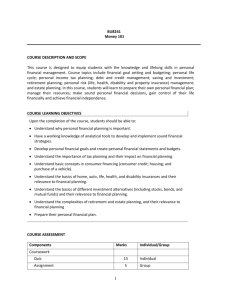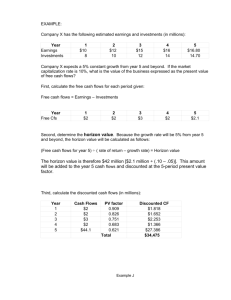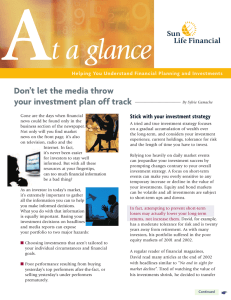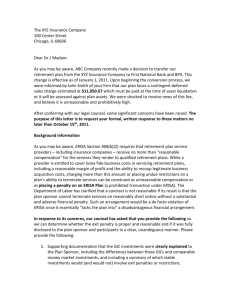Investment Policy Statement (IPS) – Sample
advertisement
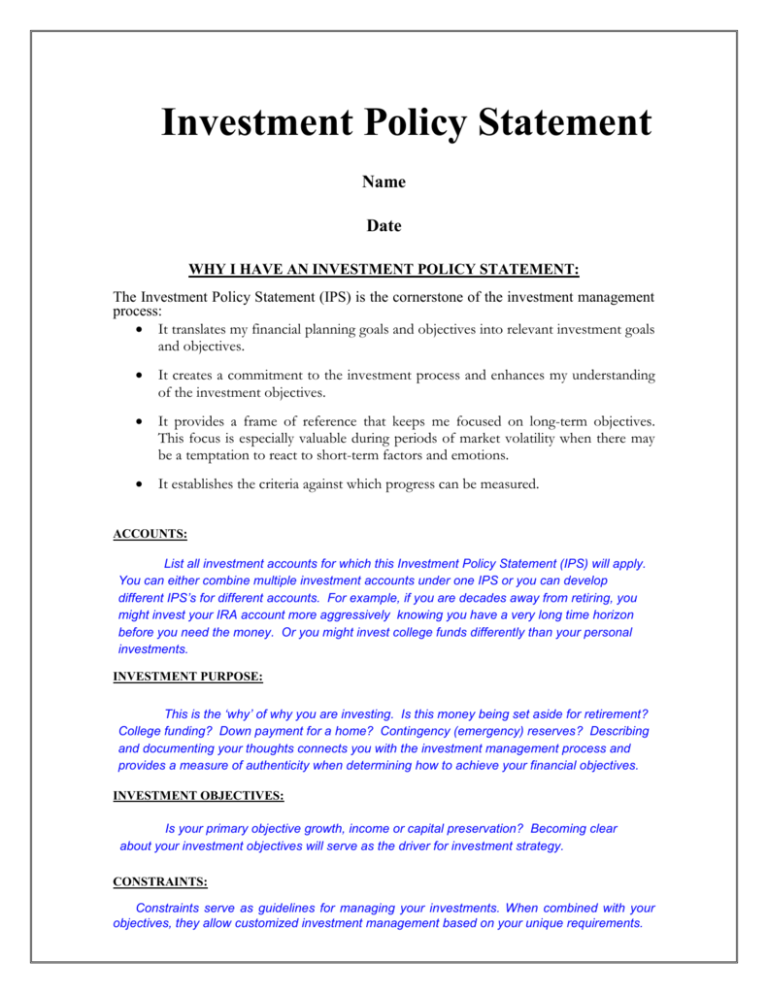
Investment Policy Statement Name Date WHY I HAVE AN INVESTMENT POLICY STATEMENT: The Investment Policy Statement (IPS) is the cornerstone of the investment management process: It translates my financial planning goals and objectives into relevant investment goals and objectives. It creates a commitment to the investment process and enhances my understanding of the investment objectives. It provides a frame of reference that keeps me focused on long-term objectives. This focus is especially valuable during periods of market volatility when there may be a temptation to react to short-term factors and emotions. It establishes the criteria against which progress can be measured. ACCOUNTS: List all investment accounts for which this Investment Policy Statement (IPS) will apply. You can either combine multiple investment accounts under one IPS or you can develop different IPS’s for different accounts. For example, if you are decades away from retiring, you might invest your IRA account more aggressively knowing you have a very long time horizon before you need the money. Or you might invest college funds differently than your personal investments. INVESTMENT PURPOSE: This is the ‘why’ of why you are investing. Is this money being set aside for retirement? College funding? Down payment for a home? Contingency (emergency) reserves? Describing and documenting your thoughts connects you with the investment management process and provides a measure of authenticity when determining how to achieve your financial objectives. INVESTMENT OBJECTIVES: Is your primary objective growth, income or capital preservation? Becoming clear about your investment objectives will serve as the driver for investment strategy. CONSTRAINTS: Constraints serve as guidelines for managing your investments. When combined with your objectives, they allow customized investment management based on your unique requirements. Time Horizon: In essence, the time horizon constraint asks, “when do you need the money?” It is closely related to your objectives. Generally, shorter time period objectives necessitate less equity risk. For example, funds earmarked for use within three years, should be invested more conservatively; conversely, investments earmarked for retirement face different risks and thus require a different investment management strategy. Cash Flow & Liquidity: Cash flow is the amount of income needed from your investments. For example, retirees may need $10,000 annually from their accounts to supplement other income. Liquidity describes the amount of your investments to be reserved in money market and short-term bond type investments. Taxes: Taxes describe your marginal tax bracket and any special tax issues related to your situation. Regulations: Certain accounts, like IRAs or qualified retirement plans, are subject to various state and federal regulations. Asset Allocation: Asset classes are the various investments used to achieve your financial goals. They include, but are not limited to, Domestic and Foreign stocks; Large and Small company stocks; Domestic and Foreign bonds; Real Estate Trusts (REITS) and Commodities funds; Precious metals and Sector funds. Long term portfolio balance targets: This indicates your target allocation between fixed income investments (money market, CDs, and bonds or bond funds) and equity investments (stocks, stock mutual funds, REITs and stock ETFs). It is expressed as a ‘target’ percent. Example: 40% Fixed Income & 60% Equities. MACRO ALLOCATION Fixed Income Investments % Equity Investments % MICRO ALLOCATION Fixed Income: Contingency/Emergency Reserves Shorter Term F.I. (1-5 years) Longer Term F.I. (5 years+) % % % Equity Asset Targets: U.S. Large Cap U.S. Mid Cap U.S. Small Cap International % % % % Other % REBALANCING STRATEGY: Describe the methodology you will use to rebalance your portfolio. For example, you will rebalance back to your targets once every 12 months or you will rebalance anytime an allocation exceeds 10% of its target. Evaluation Criteria: Here’s where you set your goals for investment returns. Target Overall Return % Time Period Target Return Equities % Target Return Fixed Income % Target Return Cash Equivalents % Market Correction / Bear Market Strategy: Write out what, if any change you plan to make to your portfolio during periods of extreme volatility. Historically, there are bear markets once every 3-5 years. Other Comments/Instructions: X_______________________________ Signature and Date Sign and date your IPS. Your signature says, “I’m committed!” ¹Debt to equity ratio will fluctuate based on market conditions.


